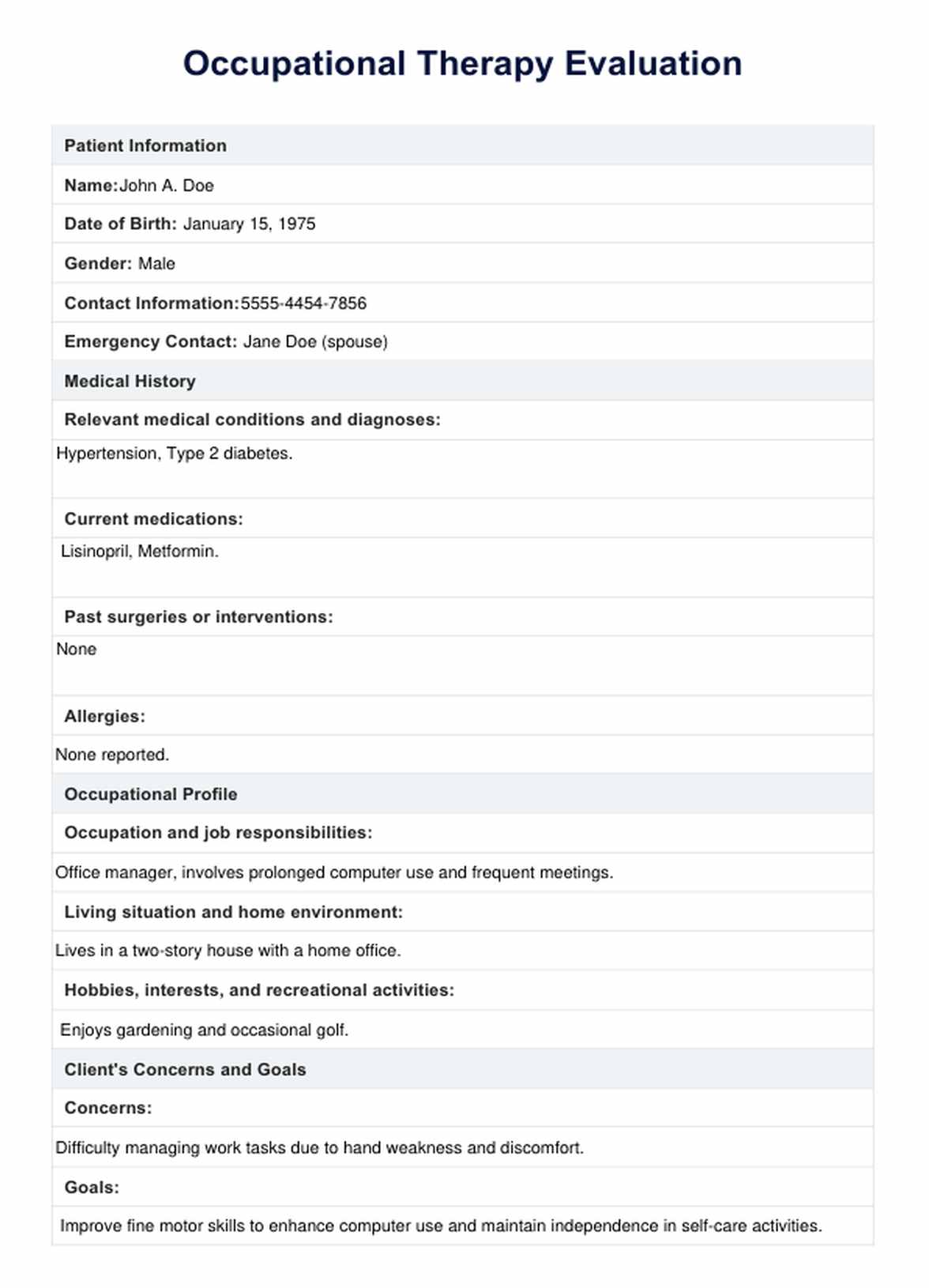Children may need an occupational therapy evaluation if they have difficulties with fine motor skills, sensory processing, self-care tasks, social skills, or participating in school activities compared to other children their age.

Occupational Therapy Evaluation
Discover Occupational Therapy Evaluation for holistic assessments. Enhance patient well-being with expert insights.
Occupational Therapy Evaluation Template
Commonly asked questions
An occupational therapy assessment aims to evaluate a client's abilities, challenges, and goals to develop an appropriate, individualized treatment plan. The OT gathers information about the client's medical history, daily routines, and participation in meaningful activities.
Occupational therapists evaluate clients using various methods, including standardized tests, observations, interviews, and self-report measures. They combine these methods to comprehensively understand the client's strengths, needs, and goals.
EHR and practice management software
Get started for free
*No credit card required
Free
$0/usd
Unlimited clients
Telehealth
1GB of storage
Client portal text
Automated billing and online payments











